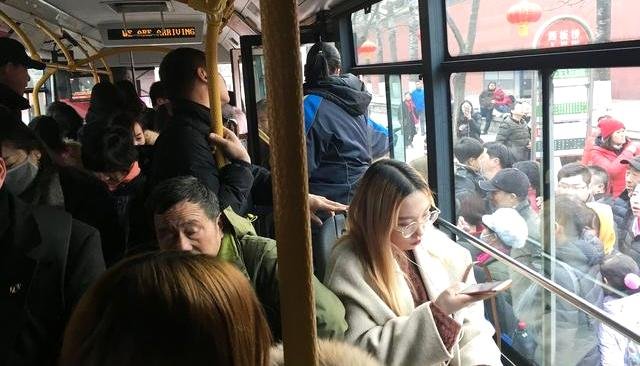Talking Travel: Bus App Update Displays Congestion, New Subway Shows Off Museum Goodies
Talking Travel: Your semi-regular roundup of Beijing's latest transportation-related news.
Big changes coming to the Beijing transit app
Anyone who has been trapped at a station waiting for a bus that seems like it will never arrive must have wondered: why doesn’t the city just slap a GPS tracker onto each bus and let people track their arrivals through an app?
The Beijing Public Transport Group is finally getting around to just that, and more. According to reporting by the Beijing News, the official transit app 北京公交 (běijīng gōngjiāo) will soon be overhauled with a host of helpful updates, and bus tracking is first on the list. By year-end, Beijingers will not only be able to track when their bus will arrive, but thanks to a new color-coded system will even be able to see how full the buses are before they arrive: green means the bus is wide open, yellow indicates that at least one seat is left, and red means it’s full-up.

Another highly-anticipated change is that commuters will be able to use a single QR code in the app to pay for both the bus and the subway, though it is not clear whether this feature will be available to users without a Chinese ID card. Currently, bus passengers are only able to pay for a trip with either a pre-loaded metro transport card or cash. Xinhua also reports that other updates in the works include subway tracking and in-app route planning.
Line 1 subway train gets a museum makeover
Tongzhou commuters are no doubt delighted with the news that they'll no longer spend an hour getting into town in a plain, grubby cart: yes, Beijing’s oldest subway line has been a spruced-up and is now decorated with images from the National Museum.
The six-car train, its interior plastered with, dare we say it, tacky decals, hit the rails on Single's Day and will continue to run for three months, reports Beijing News. Five cars display cultural relics, while the sixth takes on the dual themes of classical art and the 70th anniversary of the New China, both of which were recent exhibits at the museum. Some posters have not-so-historical QR codes that can be scanned using the Alipay app to bring the artifact to life with augmented reality.

It is not immediately clear on what schedule this train will be running, which may just make it Beijing’s hardest to find “museum.”
Flight demand from China shifting slowly but surely
At the Beijinger, we recognize that sometimes the best travel plans are the cheapest. That’s why we are always looking out for ways to save a yuan or two, whether it’s by taking advantage of devalued currency or keeping an eye out for cheap flights.
Recently, as Chinese travelers are moving away from previously hot-spot destinations, airlines and hotels are forced to adjust prices to fill the gap in revenue, leading to lower prices, and also leading to some great opportunities to save for frugal travelers.
You may have already guessed which destinations that Chinese airlines have been reporting losses on. Trips to the United States have taken a hit from the trade dispute, and now routes to nearby spots like Hong Kong and Taiwan are feeling the squeeze. But less expectedly, demand for flights to Thailand was down 5 percent in its busiest months this year, following 30 percent growth the year before.
While penny-pinchers would be wise to keep an eye on the above destination, they may want to avoid those countries that are benefiting from the runoff as tourists make the switch. Japan saw a big boost in visits from China this year, while trips to South Korea are staying steady. Many European countries are also becoming more popular, not least of which are Italy, Germany, and Croatia.
READ: Visiting the Ancient Imperial Retreat of Chengde Imperial Mountain Resort
Images: Deviant Art, EJinsight, National Museum







